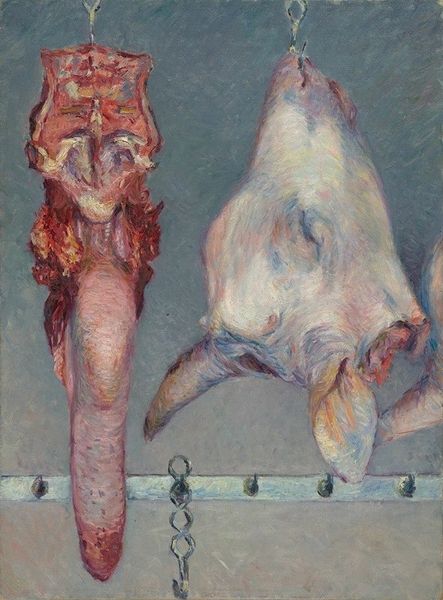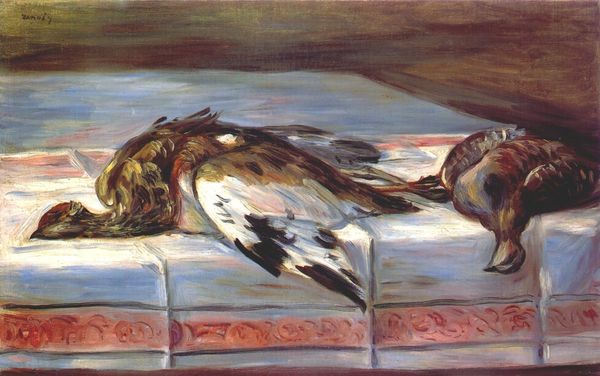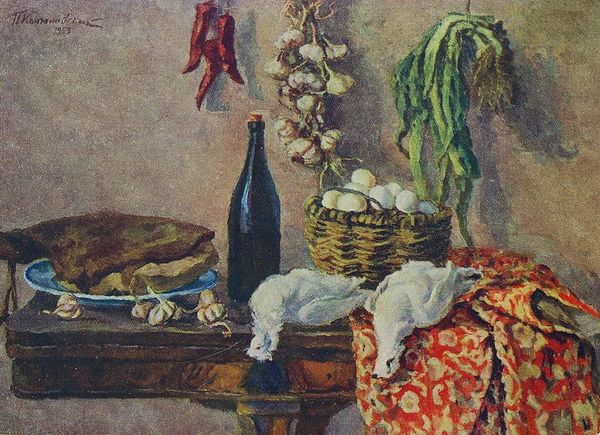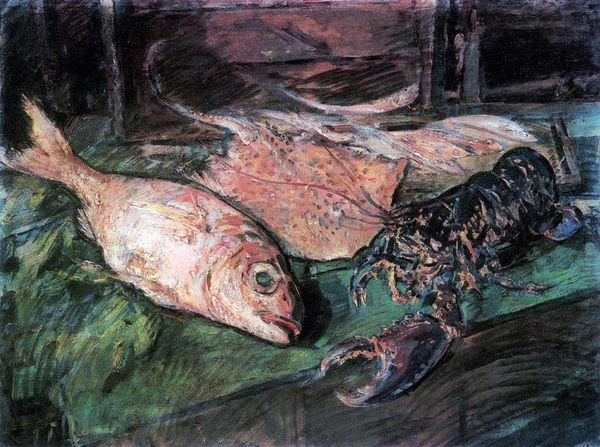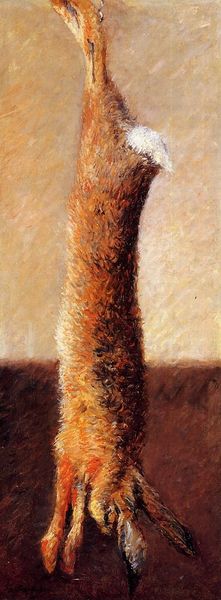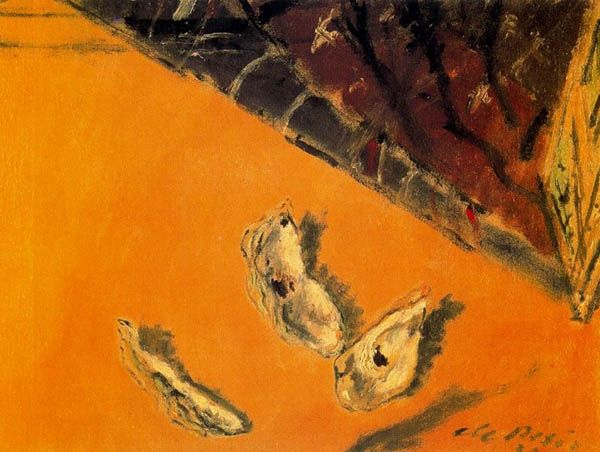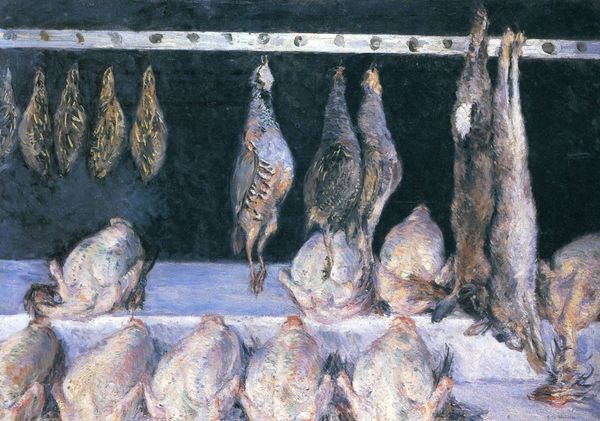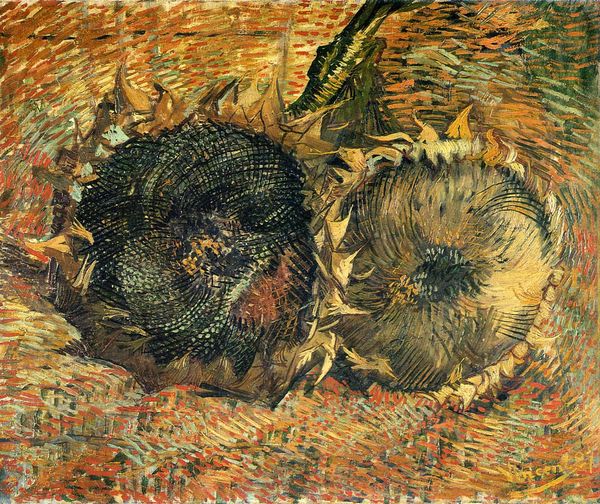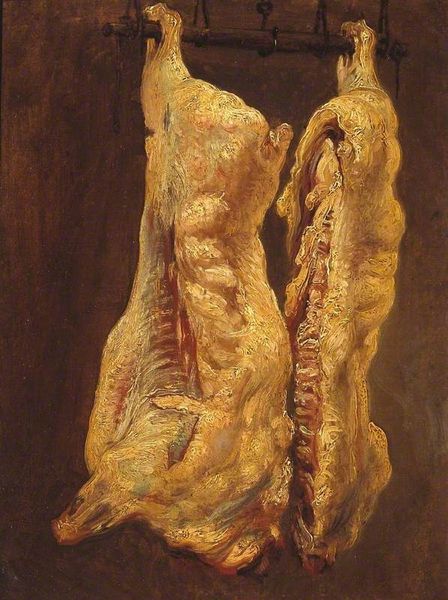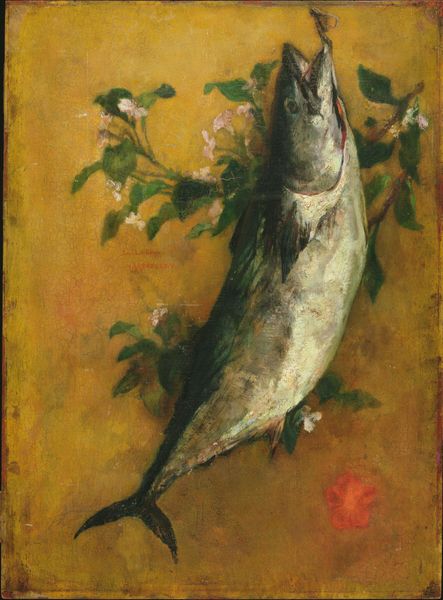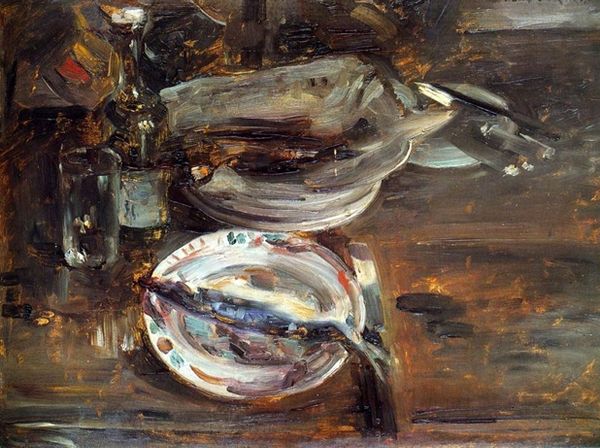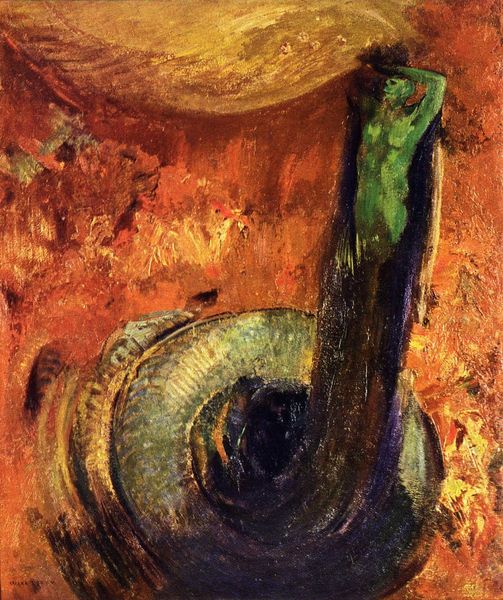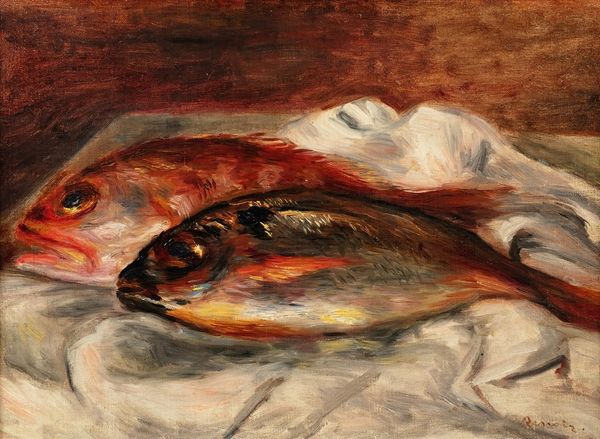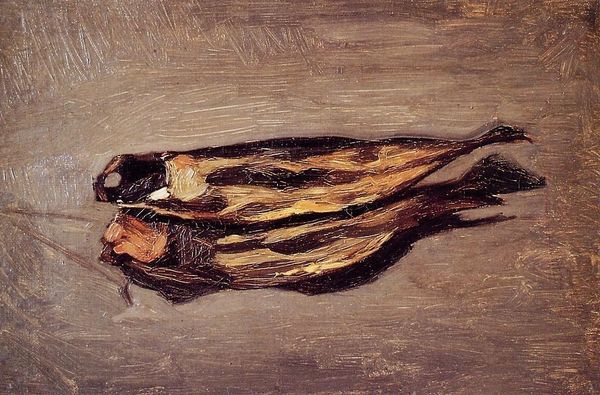
oil-paint
portrait
gouache
food
impressionism
oil-paint
bird
impressionist landscape
oil painting
Dimensions: 73 x 54 cm
Copyright: Public domain
Editor: Here we have Gustave Caillebotte's "Two Hanging Pheasants" from 1882, done in oil. I'm immediately struck by how visceral it is. The feathery texture is so detailed, yet the scene itself is rather grim. What can you tell me about it? Curator: Well, from a materialist perspective, this painting confronts us with the blunt reality of food production. It wasn't painted in a vacuum. Consider the late 19th-century context: burgeoning industrialization, shifts in class structures, and anxieties surrounding food availability. The meticulously rendered feathers point to Caillebotte’s engagement with representing material reality. Where did these birds come from? Who prepared them? And for whom were they intended? Editor: So, it’s less about aesthetic beauty and more about... the system? The means of production, you mentioned? Curator: Exactly. We often separate “fine art” from functional objects. However, Caillebotte presents us with fowl, clearly destined for consumption. Note the position of the bodies hanging from hooks and reflect upon Caillebotte's choice to portray the tools and final product so vividly. This raises questions about what we consider worthy of artistic representation, and how class informs taste. Editor: It's forcing us to acknowledge the labor and, frankly, the violence involved in putting food on the table. I guess I never thought of impressionism that way, as social commentary about production. Curator: Precisely! Caillebotte prompts us to consider not just what we see, but also the complex web of relationships embedded within the artwork's material and cultural circumstances. I invite you to see Impressionism as less of capturing pretty images, and as being reflective and actively investigating society as it stood then. Editor: I’ll definitely look at Impressionism through a different lens now, appreciating the layers of social context. Thanks! Curator: Likewise. Considering the artwork's materials and the world they inhabited gives us a new perspective on these kinds of artworks.
Comments
No comments
Be the first to comment and join the conversation on the ultimate creative platform.
